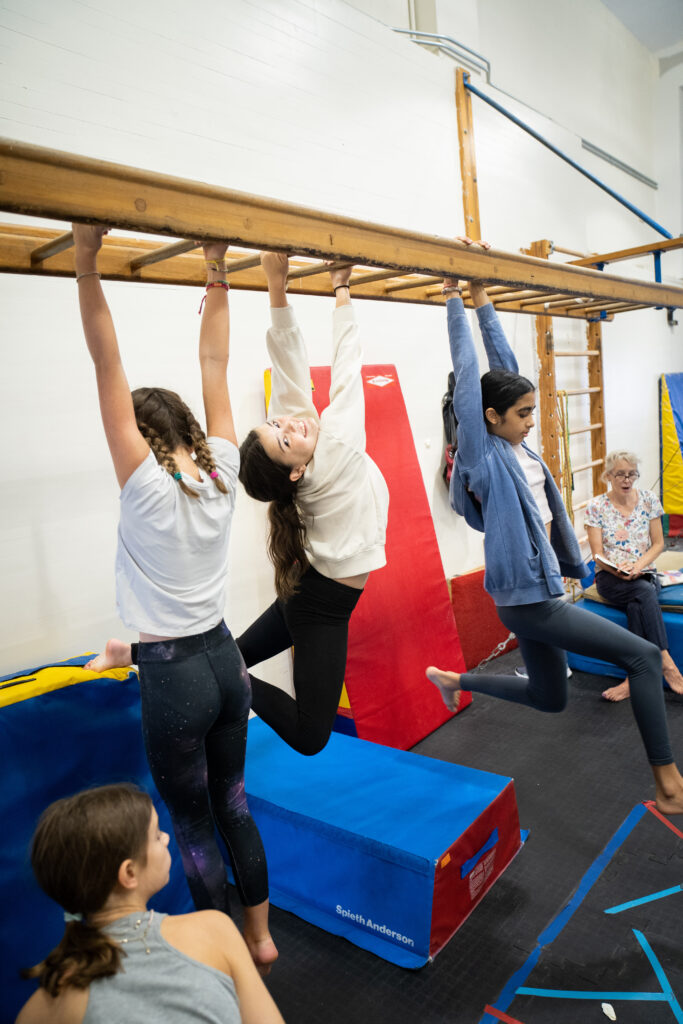High School Course Catalog |

Saint Ann’s recreational arts curriculum is rooted in the idea of providing a positive, creative, safe environment in which to foster an awareness of the value of physical activity and athletics. We are committed to engaging students in a process that will enhance their lives now and in the future.
Physical fitness is a lifelong objective. Our classes and activities from preschool through twelfth grade reflect this belief, putting substantial emphasis on the idea that the experience should be a joyful one. Students are encouraged to explore our physical education and athletic offerings not only to enhance their health, but also to learn the lessons inherent in trying new things, competing and facing challenges.
The foundation of our program is taught in the Preschool and the Lower School. During these years the children receive their initial exposure to movement. Constantly moving, they touch, climb on, jump over, balance across, and run toward any obstacle or challenge we offer, and we offer plenty! By the time they have reached third grade, they have explored movement in relation to space, time, and form, learned basic skills in team and individual sports, and learned to interact in large and small groups, working toward a shared goal.
In the fourth grade, a challenging transition occurs. Each child must negotiate his or her own complex, departmentalized middle school schedule. Individual attention is given to ensure a positive adaptation to the new and often larger gym classes with older children. Fourth, fifth, and sixth graders continue to develop through drills and game-playing experience, with an emphasis on rules and beginning-level strategies. Our lunchtime intramural program is open to all lower middle school students, often providing them with their first chance to be a member of a team.
Seventh and eighth grade students refine the skills they have learned in the earlier grades. They are ready to use more complex individual and team strategies in sports and to challenge themselves and each other at a higher level. In addition to the “traditional” sports curriculum, these challenges can be achieved through alternative activities such as badminton, bocce, indoor climbing, ultimate Frisbee, fitness room, and jump rope, as well as through electives in exercise, karate, yoga, and inward bound (adventure training). Upper middle school students may join interscholastic teams in baseball, basketball, gymnastics, soccer, softball, track and field, and volleyball.
We use team teaching to maximize student-teacher interaction, and we organize the classes according to age. This method provides an opportunity for individualized attention and skill development. During the fall and spring our classes are conducted outdoors; in the winter, we teach classes in our large and small gymnasiums, fitness room and our apparatus room.

High school students can begin to focus on developing their own program of life fitness, and the high school courses are designed to show students their many options. For the teachers, working with high school students is more like sharing their own ongoing learning process in both its physical and creative aspects. We take more risks, understand more precisely, and strive harder toward mastery.
Two major areas constitute the high school program: recreational classes and interscholastic teams. We encourage the students to join in all activities. High school classes are offered in adventure training, basketball, climbing, cycling, exercise, flag football, floor hockey, karate, Parkour, physioball, Pilates, racquet games, running, “Sports, Games, and Fitness,” table tennis, ultimate frisbee, weight training, and yoga. High school students may join interscholastic teams in baseball, basketball, gymnastics, soccer, softball, track and field, indoor track and volleyball.